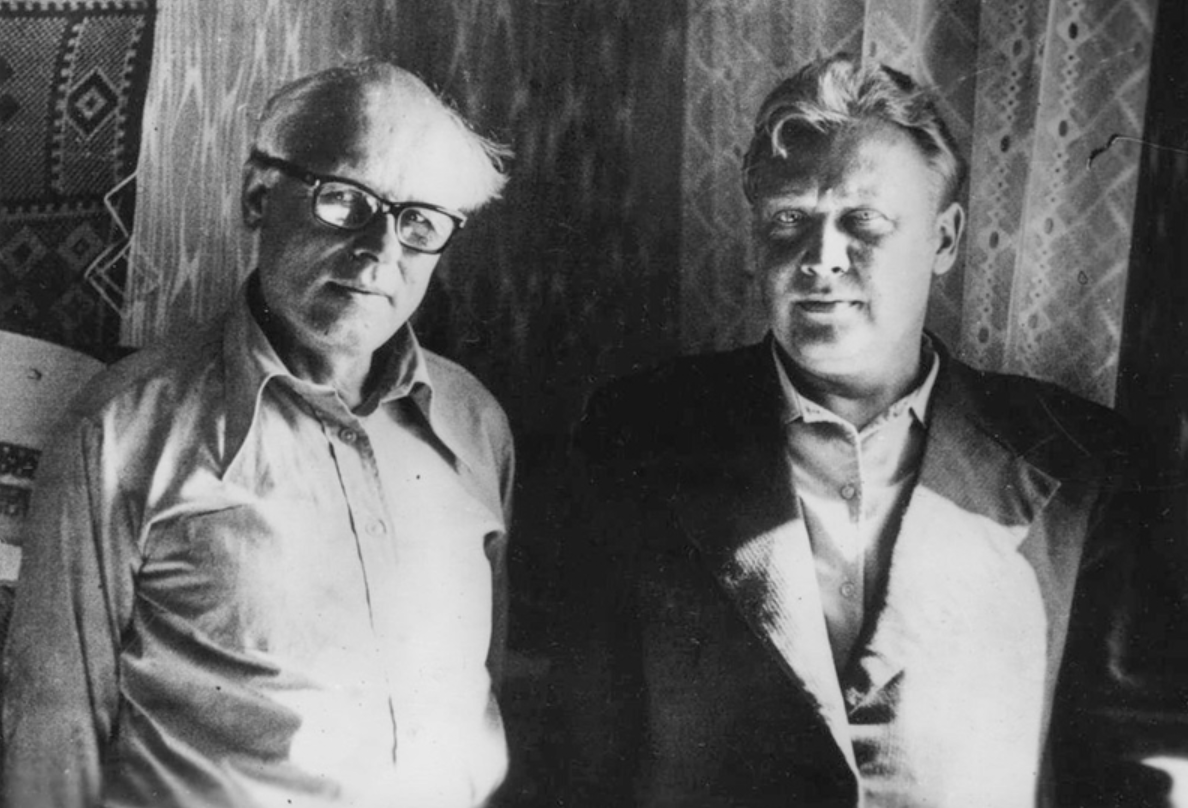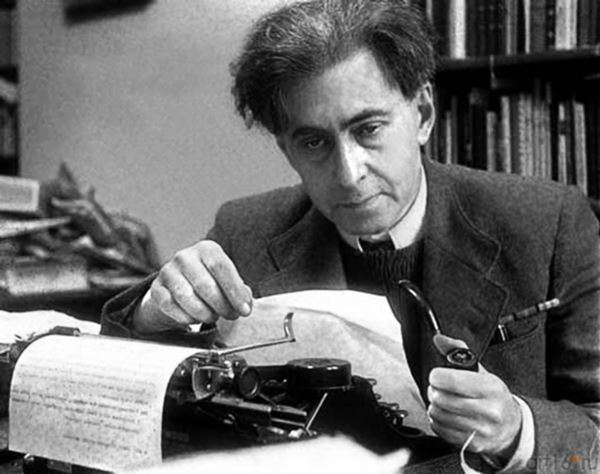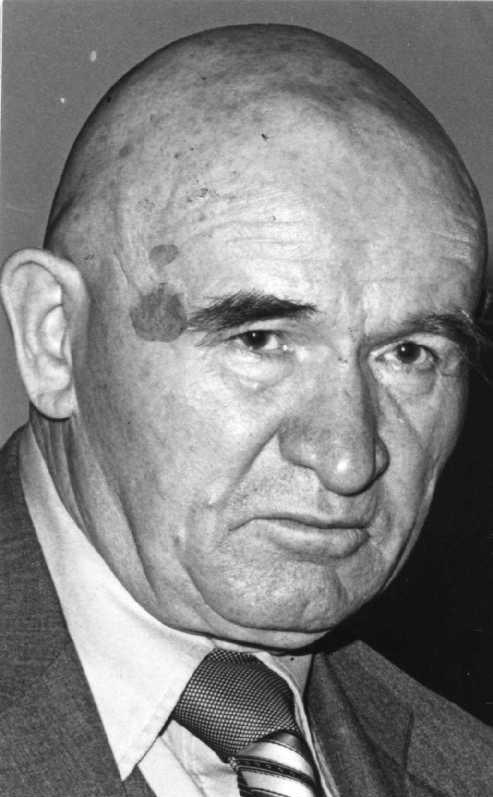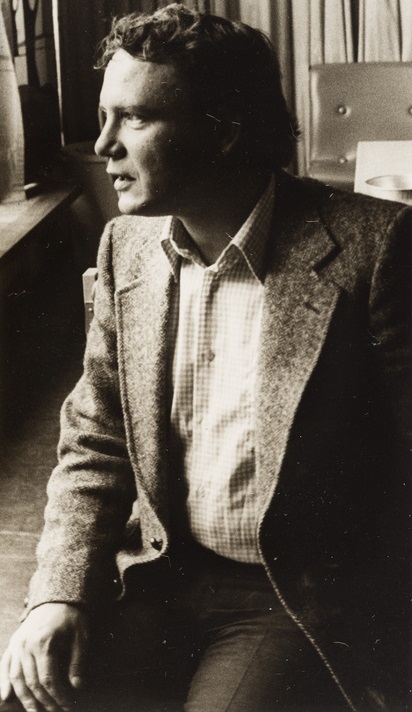Dissident Movement in the Soviet Union
In the 1960s and 1970s, the dissident movement gained momentum. The dissidents publicly demanded that public authorities respect and follow domestic and international treaties. They also sent appeals to the West and arranged meetings and demonstrations. In return, efforts were made to stop the dissidents by force: they were arrested, sent to mental hospitals, or permitted to continue working in their field.
The term „dissident” derives from Latin (dissidens) and means „disagreeing”. However, the word „dissident” was mostly used in the West, whereas the dissidents themselves preferred to be called „nonconformists” (inakomõsljaštši in Russian). Dissidence covers a variety of forms of resistance to the Soviet power, but it is actually a loose term.

In general terms the dissident movement in the Soviet Union was primarily the struggle of the intelligentsia against the regime. There was practically no opposition by the workers, but there were numerous dissidents among the workers, including members of the academic community who had been sacked for being „anti-Soviet” and where not allowed to continue their professional practice for political reasons and/or could not pursue their creative activities etc.
Although Moscow was the centre of dissident movement, there were parallel developments in Leningrad and also elsewhere, but their scope of activities was considerably smaller. The movement could differ greatly by region, even concerning the final goals of the activities.
In broader terms, dissidence had emerged by the beginning of the 1970s, with the birth of the movement for the protection of human rights and civil rights, for which dissidence was the umbrella term. One of the main features that characterised dissidence was the fact that the resistance became public, and the participants acted under their own names.
In generalised terms a dissident was a person who demanded publicly from the authorities the observance and performance of national and international agreements. But it has to be borne in mind that this is merely a generalisation. Although largely the activities were public (signed appeals, open letters, protests etc), a certain part of the movement still remained hidden. The latter included reproduction of banned literature, publishing underground magazines etc.
The dissident movement could be broken down into periods on the basis of the reaction of the authorities. Although dissidents were arrested, incarcerated in mental hospitals, and persecuted in other ways earlier as well, the repressions became particularly heavy in 1972/1973, again after the human rights activists increased their activities in 1977/1978 and for the third time after Yuri Andropov became General Secretary of the Central Committee of the CPSU in 1982/1983. But the periodisation is arbitrary and there were variations in those years in different regions.
The Birth of Dissident Movement
One could say that dissidence was born in the second half of the 1950s, when the danger of repressions had decreased considerably after Stalin’s death. During the brief thaw many tried to test the limits to see how far they could go. During this period the criticism was more focused on literature. Special mention should be made of the books „Not by Bread Alone” by Vladimir Dudintsev and „The Thaw” by Ilya Ehrenburg. The journal „Novy Mir” played a significant role during this period, with the editor Alexander Tvardovksy publishing various important pieces. The most important among them must have been the short story „One Day in the Life of Ivan Denisovich” by Aleksandr Solzhenitsyn, which appeared in the journal in 1962.

Such situation was not allowed to last for long and in the second half of the 1960s when Brezhnev grabbed power, an era of neo-Stalinism commenced, and the „screws” were tightened again. As censorship became stricter, dissidents started to use more and more self-publishing or samizdat.
The authors would type several copies of their work, using carbon paper and share the copies with their acquaintances. The latter would then make more copies and pass them on to their own acquaintances. Poems were the first to be self-published, especially those by poets whose work was prohibited during the Stalin era: Anna Akhmatova, Osip Mandelstam, Marina Tsvetaeva and others. Later followed the work by younger banned poets, e.g., Iosif Brodsky, Naum Korzhavin etc. Samizdat was also used to publish censored works by authors who were not banned, like Yevgeny Yevtushenko and Andrei Voznesensky
Another form of spreading illegal creative work was magnitizdat, i.e., sound recordings (Alexander Galich, Vladimir Vysotsky, Bulat Okudzhava and others). Samizdat translations should not be overlooked either, as many works banned in the USSR got published in this manner. Tamizdat was a special form of samizdat, for works published in Russian in the West.
The first underground periodicals started to be published at the beginning of the 1960s as well. The best known among them was „Sintaksis”, whose editor was Alexander Ginzburg. Originally samizdat was publishing fiction, but in the middle of the 1960s political subjects started to be published. The key figure at the time was Roy Medvedev, who from 1964 to 1970 published a monthly, which later started to be called „The Political Diary”.
The most influential underground publication was definitely „The Chronicle of Current Events”. The first issue came out on 30 April 1968. It was published until 1984, apart from a short break between 1972 and 1974. The editorial staff was anonymous, and the general public learned about the persons involved only through the various prosecutions. Anyone could pass on information. According to the instructions information had to be passed to the person from whom the publication was received, that person then passed the information to the person from whom he or she had got the publication and so on.
The Chronicle reported violations of human rights in the Soviet Union. It also covered information about persecution of national minorities and religious groups. Whenever possible, the Chronicle was sent abroad, becoming an important source of information for human rights organisations. As getting the material to be published together was not an easy process, the Chronicle contained a lot of irrelevant and sometimes even incorrect information. On some occasions the KGB was planting false information in order to discredit the Chronicle and they were sometimes successful in doing so.
During the 1960s several representatives of the intelligentsia were arrested for their „anti-Soviet activities”. The structure of the dissident movement started to emerge on the basis of those arrests. Special mention should be made of the arrests of the writers Yuli Daniel and Andrei Sinyavsky, which created a lot of attention and culminated with the protest against human rights violations at Moscow’s Pushkin Square, the first of its kind in the Soviet Union.
The protest was organised by Alexandr Esenin-Volpin, who distributed the leaflets with information about the event. He has also been called the first dissident to follow the „legalist” strategy (zakonnik), i.e., he was strictly observing all Soviet laws and maintained that legislation had to be followed to the letter, not according to the interpretation of the authorities.
Sinyavsky and Daniel entered a plea of not guilty but were sentenced to five and seven years of hard labour respectively. The news about the trial of the writers also reached the West and the Soviet authorities found that they might have to start taking the effect of such leaks into account in the future. The minutes of the trial and other relevant materials were distributed through samizdat. The writings did not protest the prosecution of the writers as such but pointed out the violations of human rights before, during and after the trial.
A new term of „signatory” (podpisant) appeared in the Russian society in the second half of the 1960s. At first letters were sent to the various Soviet authorities, later also to international organisations and the „global public”. Those who drafted the public letters and collected signatures to them did not assume that they can convince the Soviet authorities, but rather wanted to demonstrate their disagreement with the official positions. The signatories did not consider themselves to be part of the political opposition and acted by observing the Soviet laws. Therefore, more often than not the KGB could do nothing about them.
How the Dissidents Organised Themselves
The first attempts to get organised began in parallel with the birth of the dissident movement in the 1960s. Given that it was prohibited to establish independent organisations, such activities were really dangerous, for „belonging to a criminal group” was deemed as an aggravating circumstance in court.

However, the dissident movement was by no means uniform. Looking back, human rights organisations were definitely the best known, but were not the only ones nor the first to emerge. An interesting example was Pyotr Grigorenko, Head of Department at the Military Academy of the General Staff, who at one point came to the conclusion that the current Soviet state did not comply with the principles laid down by Lenin. In 1964 he founded the Group for the Struggle to Revive Leninism. The authorities did not share his thoughts and did not admit to having deviated from Leninism. Instead, they started persecuting Grigorenko, which turned him into one of the leading human rights activists and he never mentioned „revival of Leninism” again.
The controversies of the 19th century were brought back by the dissident movement as well. Those who stood for liberal Western values contrasted sharply with the heralds of the „revival of the Russian nation”. Thus, the All-Russian Social-Christian Union for the Liberation of the People (VSKhSON) was established in 1964 in Leningrad. The aim of the organisation was reorganising the Soviet Union on the basis of Orthodox and socialist principles. The organisation was created by a group of students, led by Igor Ogurtsov, a student of the Japanese language. The ideology was based on „social Christianity”, i.e., combining Christian ethics with the socialist society. The activists considered Fyodor Dostoevsky, Nikolai Berdyaev, Vladimir Solovyov, and others as their teachers. However, the movement was not too widely known in Russia.
In 1971 former political prisoner Vladimir Ossipov started to publish an underground journal, named „Veche” (Assembly), aiming to unify the Russian nationalists. The journal claimed it was patriotic, following „the tradition of Fyodor Dostoyevsky and the Slavophiles”. No more than nine issues were produced, covering such subjects as religion, Russian culture, protection of cultural heritage etc.
The authors by no means shared a common ideology, so the articles varied from antisemitic or those praising Stalin to theoretical attempts to combine democracy with Russian nationalism and the Orthodox religion. Still, there were certain ideas that were shared by all. One of them was that the crisis was caused by failure to follow Christian ideology. Another common theme was that Russia was the „third way” between the East and the West, placing Russia in opposition with the Western ideologies (including Marxism) as well as the „yellow peril from the East”.
Gradually Aleksandr Solzhenitsyn also returned to his „Russian roots”. His 1973 „Letter to the Soviet Leaders” added a lot to the Russian nationalist ego. Although the „Gulag Archipelago” has been considered as an important landmark, the above letter was also distributed widely and might even have served as a more important reason for the arrest and expulsion of the author from the Soviet Union.
Although there were many underground or semi-public groups, their impact remained mostly marginal. Human rights movements gained a lot more attention. The first serious attempt to bring together the dissidents was made in 1969, when the Action Group for the Defence of Human Rights in the USSR was founded. During its four years of existence, they sent eight appeals to the United Nations, inviting the UN to put pressure on the Soviet Union for the latter to observe human rights.
The appeals went unanswered. In November 1970 a parallel organisation, Committee for Human Rights in the USSR, was established by the physicist Valery Chalidze. The objectives of the Committee included „consultative assistance to the organs of government in matters concerning human rights and research into the theoretical aspects of the human rights question”.
Obviously, the organs of government refused to work together with such self-appointed committee. At the same time the Committee for Human Rights in the USSR was the first civil society organisation to become member of an international organisation; in 1971 it became an affiliate of the International League of Human Rights. Although the Committee for Human Rights was an investigative and consultative body, they also provided legal assistance to individuals, prepared appeals to courts to review cases, helped register religious organisations etc.

The Committee existed until 1973. In 1972 its founder V. Chalidze was stripped of Soviet citizenship while lecturing in the USA. Chalidze’s case was not unique, as the same method had been used in case of other dissidents (Vladimir Bukovsky, Natalya Gorbanevskaya, P. Grigorenko, A. Esenin-Volpin, A. Solzhenitsyn, J. Brodsky, and many others). It is highly probable that the same fate would have waited the best-known dissident, Andrey Sakharov, who was awarded the Nobel Peace Prize in 1975, had he not been too closely connected with top secret information because of his profession. On 22 January 1980 he was exiled in the city of Gorky and practically placed under house arrest.
A number of leading dissidents were either expelled from the country or offered to do so (an offer they could not refuse, i.e., they were made to emigrate). Then again other dissident groups fought for the freedom to emigrate. The Jews were among the first to be granted the right to leave the Soviet Union. Thousands of Jews got the possibility to emigrate to Israel from the 1960s to 1980s. Many non-Jews, including cultural figures, were also able to leave on the Jewish visa.
The Volga Germans were another minority group whose members wished to emigrate, their destination was West Germany. However, the authorities only permitted small numbers to leave out of the many who so desired. Even submitting an application to leave from the Soviet Union could have dire consequences, e.g., dismissal, transfer to a lower position, stripping of an academic degree etc. Applicants could ruin the rest of their lives, if they were not granted permission to leave: they were not allowed to go abroad, could not pursue their professional careers etc.
The Helsinki Effect
During 1973–1974 the dissident movement experienced a low point, with many activists leaving the Soviet Union. Things started to turn for the better after the Conference on Security and Co-operation in Europe, held in Helsinki from 30 July to 1 August 1975. 35 heads of state, including Leonid Brezhnev, signed the Helsinki Final Act (The Helsinki Accords). Part 3 of the Final Act obligated the signatories to respect human rights and political liberties, including the freedom of the press, freedom of speech, freedom of assembly and freedom to emigrate. This document could be used to measure the activities of the authorities and their compliance with the applicable legislation of the country.
Interestingly, the initiative to organise the conference came from the Soviet Union. Moscow’s aim was to gain international recognition to its de facto control over Eastern Europe. During the Helsinki talks the Brezhnev administration focused most on defending the principles of the inviolability of frontiers in Europe and non-intervention in internal affairs. This was also the reason why the Western countries, especially the United States were sceptical about the Helsinki Accords. However, in the name of détente they considered the Accords necessary. The EC and Canada suggested that the Accords also include a section on human rights.
In essence, the Helsinki Final Act meant a revolution in international relations, turning human rights into a legitimate issue in relations between states.
In essence, the Helsinki Final Act meant a revolution in international relations, turning human rights into a legitimate issue in relations between states. In addition, security started to be considered from a broader perspective. The situation regarding human rights in a particular country became a matter of security – the violation of the fundamental civil rights could now be seen as a threat to world security in general.
The Soviet Union was naturally reluctant towards adding the part on human rights to the Accords. However, the Kremlin gave in, for they hoped that the political and economic benefits from the Accords would outweigh the damage arising from the human rights provisions. Moscow probably thought that the requirements concerning human rights were merely empty slogans and would not be accompanied by particular obligations.
The Soviets also believed that the principle of non-intervention in internal affairs would be sufficient to do away with the effect of the human rights requirements. Furthermore, the Constitution of the USSR contained most of the human rights provisions and fighting against them would have seemed weird.
What the Soviet authorities could not foresee was the reaction of the dissidents to the human rights clauses of the Accords. They started organising various associations to monitor compliance with the Helsinki principles, the so-called Helsinki Groups. They also informed the West about human rights violations in the Soviet Union.
On 12 May 1976 Academician Sakharov organized a press conference in Moscow where Professor Yuri Orlov announced the formation of the Public Group to Promote Fulfilment of the Helsinki Accords in the USSR (Moscow Helsinki Group). The Group had eleven members and its goal was to monitor Soviet compliance with the Helsinki Final Act, gather and distribute information about violations of the Final Act. The Ukrainian Helsinki Group was founded on 9 November 1976, the Lithuanian Helsinki Group on 25 November 1976, the Armenian Helsinki Group on 1 April 1977 and the Georgian Helsinki Group on 14 November 1977. In September 1976 the Workers’ Defence Committee was established in Poland and on 1 January 1977 Charter-77 in Czechoslovakia. Although the latter two organisations did not call themselves Helsinki Groups, they were founded on the basis of international human rights agreements.
As the possibilities of the Soviet citizens to influence the policies of the Soviet government were practically non-existent, foreign governments had to take on this role. The objective of the Helsinki Groups was to encourage the West to act as intermediary. In addition to the human rights organisations, national movements also addressed their declarations to the West, mainly to international conferences, the United Nations, the US Congress, the President of the United States and „the global public”.
The fall of the Soviet Union has been explained by a process, called the Helsinki Effect. According to this theory the Soviet Union had to ease their repressions against the dissidents because of international pressure to observe human rights norms. The Helsinki Effect could have worked only on the condition that the public opinion of the West mattered for the Kremlin. In order for this to happen the Soviet Union had to depend on the Western countries both economically and politically. The proponents of the Helsinki Effect theory claim that the Soviet Union with its stagnating economy and the Eastern bloc as a whole became more and more dependent on the West.
At the beginning no one could expect that the Helsinki Accords would turn out to be a moral and political trap for Moscow. The fact that the Accords were not treated as a secret document in the Soviet Union and were published in the daily newspapers and as a separate publication, proves that the Soviets saw no danger in those provisions.
The opinion of both the Soviet authorities and the West changed quickly, when soon after the Helsinki Conference dissidents became significantly more active in the Soviet Union. Although independent organisations were not allowed in the Soviet Union, the reaction of Moscow to the newly established Helsinki Groups was surprisingly calm. The KGB did warn Y. Orlov that the Group’s activities were illegal and anti-constitutional but nevertheless they were allowed to continue for eight months without interference. During this time the members of the group conducted several investigations and published 18 documents describing human rights violations. As it was not possible to disclose this information in the USSR the materials were sent to the West.
The reaction of the authorities was predictable, but the KGB used somewhat different tactics when dealing with different Helsinki Groups. For example, in Ukraine all the Group members were arrested. Usually only a few leading activities were arrested, and the rest were threatened with prison if they did not emigrate or stop their activities. That would have meant that the activists who could stay in the Soviet Union and out of prison, would have spent their energy solely on demands to free the incarcerated Group members.
By the early 1980s the dissident movement was in a crisis. To a great extent the reasons lay in the worsening of international relations. In 1982 the Moscow Helsinki Group discontinued its work. By 1983 all public or semi-public dissident resistance had been practically supressed.
The change came when Mikhail Gorbachev became General Secretary of the Central Committee of the CPSU and started to pursue the policies of perestroika and glasnost. At the end of 1986 political prisoners started to be released, censorship was eased, independent organisations and publications were no longer prohibited etc. On 28 July 1989 the Moscow Helsinki Group was re-established, and Larisa Bogoraz became its leader. In accordance with its statutes, the Moscow Helsinki Group was a non-governmental organisation, whose aim now was not registering violations, but practical contribution to the performance of the humanitarian norms of the Helsinki Accords.
The dissident movement in its former form started to disappear. Samizdat suffered a similar fate, for the new situation in publishing made such publications unviable.
Peeter Kaasik (1974) is a researcher at the Estonian Institute of Historical Memory and the Estonian War Museum, whose main field of study is the Estonian military history of the 20th century.
Literature:
Dissidentlik liikumine Eestis aastatel 1972-1987 : Dokumentide kogumik / koostanud Arvo Pesti. Sari: Ad fontes, 17 (Tallinn : Rahvusarhiiv, 2009)
Piirimäe, Kaarel; Kaasik, Peeter. „Hirvepargi kõnekoosolek ja Eesti vabanemine,” Hirvepark 1987 : 20 aastat kodanikualgatusest, mis muutis Eesti lähiajalugu / peatoimetaja Tõnu Tannberg (Tallinn : Kultuuriselts Hirvepark, 2007), 4–45.
Rubenstein, Joshua, Soviet dissidents : their struggle for human rights (Boston: Beacon Press, 1985)
Thomas, Daniel C, The Helsinki effect : international norms, human rights, and the demise of communism (Princeton ; Oxford : Princeton University Press, 2001)
Алексеева, Людмила, История инакомыслия в СССР (Издательство Весть, 1992)
Крамола : инакомыслие в СССР при Хрущеве и Брежневе 1953-1982 гг. : рассекреченные документы Верховного суда и Прокуратуры СССР / под редакцией В. А. Козлова и С. В. Мироненко ; ответственный составитель О. В. Эдельман при участии Э. Ю. Завадской (Москва : Материк, 2005)
Кречмар, Дирк, Политика и культура при Брежневе, Андропове и Черненко 1970-1985 гг (Москва : АИРО-XX, 1997)
Широкорад, Александр, Диссиденты 1956—1990 гг (Москва : Алгоритм, 2014)
Шубин, Александр, Диссиденты, неформалы и свобода в СССР (Москва : Вече, 2008)